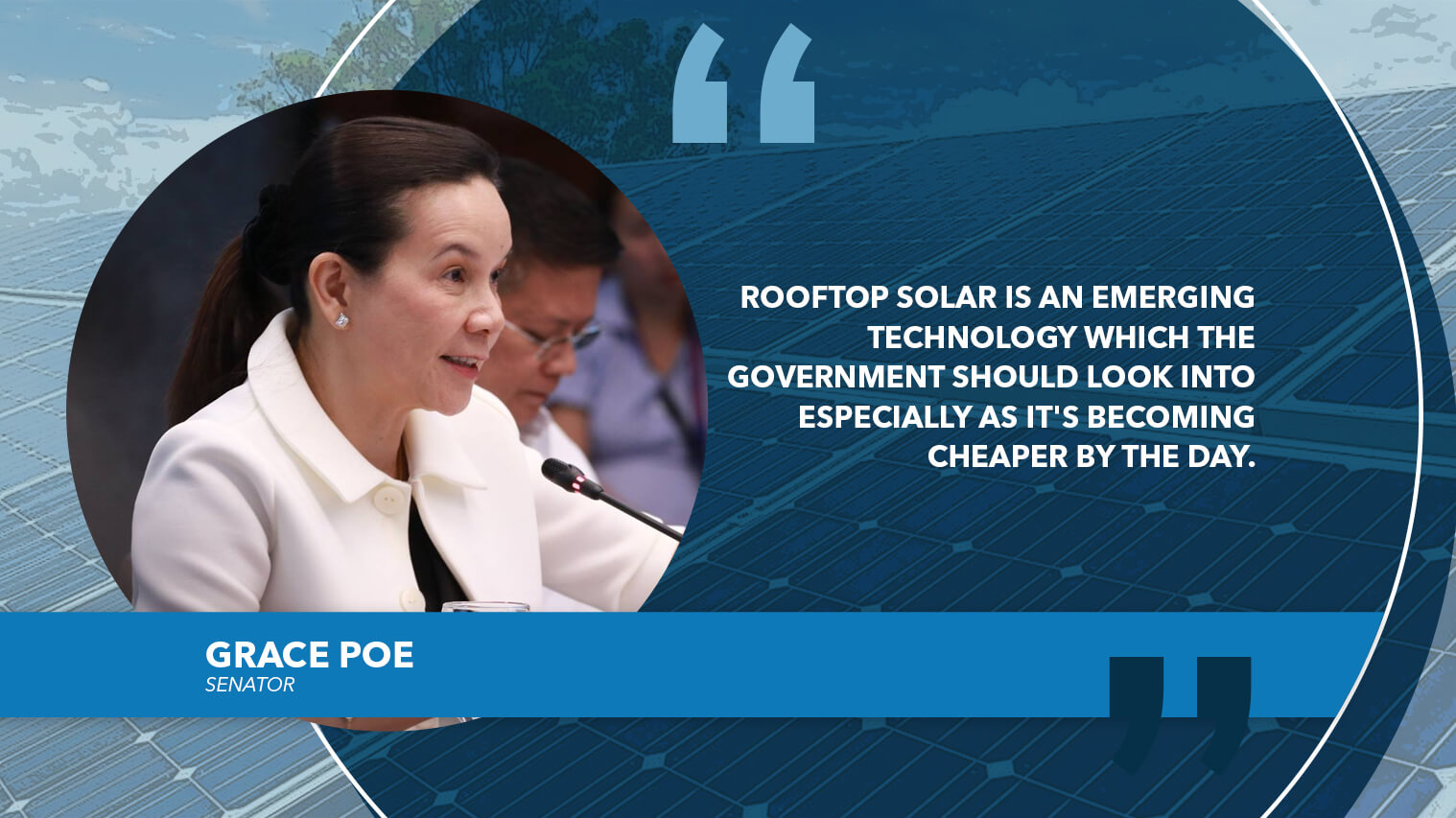A proposal to cut the cost of electricity bills of households and business establishments through the use of rooftop solar technology is currently under scrutiny by the Senate committee on energy chaired by Senator Sherwin Gatchalian.
Senator Grace Poe initiated the filing of Senate Bill No. 1719, promoting the adoption of rooftop solar technology among residential, commercial, industrial and government end-users.
Poe’s measure is also aimed at addressing institutional barriers to its adoption and support the development of rooftop solar energy in the country.
“Rooftop solar is an emerging technology which the government should look into especially as it’s becoming cheaper by the day,” the legislator said.
The lawmaker noted claims made in 2014 by former Department of Energy (DOE) Secretary Jericho Petilla on electricity from solar panels directly installed on one’s rooftop costs only P9 per kilowatt hour compared to power sourced from coal plant which was P12 per kilowatt hour.
“Electricity from solar panels directly installed on one’s rooftop costs only P9 per kilowatt hour compared to power sourced from coal plant which was P12 per kilowatt hour.”
“Unlike other power plants, whether fossil-based, hydro, wind or solar farms, rooftop solar does not require land conversions because it uses what is usually an underutilized and already existing resource — the roof,” the lady senator said.
“Complete solar photovoltaic systems or solar technology can be bought off-the-shelf and could be easily installed in a few hours. Larger systems may take a few days. No other technology, renewable or otherwise, could match the convenient installation attributed to rooftop solar,” she added.
“Complete solar photovoltaic systems or solar technology can be bought off-the-shelf and could be easily installed in a few hours. No other technology, renewable or otherwise, could match the convenient installation attributed to rooftop solar.”
As early as 2008, policy innovations such as net-metering system was already introduced under Republic Act 9513, or the Renewable Energy Act of 2008, supporting the development of rooftop solar.
Under a net-metering system, the homeowner is only billed for the “net” energy used each month, the difference between the energy produced by solar power system and consumed by the household over the monthly billing period.
The excess energy generated from solar technology installation will be delivered to the local grid of the electric distribution utility and will be used to offset the end-user’s electricity consumption.
The emergence of rooftop photovoltaic or solar technology as an increasing affordable and feasible method of complementing the electricity needs of residential and commercial end-users is also seen to reduce overall demand especially during peak hours which is usually between noon to 2 p.m. when the sun is hottest, Poe said.
To further increase and encourage the adoption of rooftop solar in the Philippines, she laid down the following proposals: removal of the 100-kilowatt cap on distributed generation to allow large electricity consumers such as commercial establishments and industrial buildings to avail of the net-metering program under RA 9513; insertion of an explicit provision that the same reference price should be applied to both electricity imported from and exported to the grid by end-users; require the DOE, Energy Regulatory Commission (ERC), National Renewable Energy Board, Department of the Interior and Local Government to standardize permits and licenses needed to install rooftop solar panels; and institutionalization of the rooftop solar loan program of the Pag-IBIG Fund.
As early as 2015, the Pag-IBIG Fund already introduced solar panel acquisition or installation loan.
The bill also seeks to mandate all government agencies to install solar energy system in their respective offices and building to supply at least 5 percent of the electric power requirements and which shall increase by 5 percent every five years.


